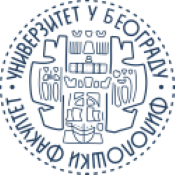Gastronomic Languages: Aesthetics and Creative Processes as an Object of Artistic Expression and Their Poetic Interrelations. Case Study: Actors and Managers of the Gastrocultural Field in Bogotá
DOI:
https://doi.org/10.18485/beoiber.2023.7.1.14Apstrakt
How are gastronomic languages linked to the aesthetics and creative processes of art, its symbolic, expressive and communicative elements, based on the poetic interrelations of actors and managers of the gastrocultural circuit of Bogotá? This question considers the following research purposes: a) to identify an epistemological - methodological corpus for the exegesis of the creative processes associated with art - food in gastronomy; b) analyze the relationship between art, gastronomy and design from creative processes where art - food converge as an element for the construction of new gastronomic languages; and c) map the artistic processes associated with art – food in the context of actors and managers of the gastronomic circuit of Bogotá. The qualitative nature of the research denotes an approach of symbolic interactionism supported by the techniques of interview, social cartography and focus group and its consequent instruments: interview guide and focus group and social maps. The population that is covered corresponds to actors and managers of the gastrocultural circuit of Bogotá represented in the following territories: Zone G, Zone C, Zone T, the surroundings of the Plaza de Usaquén; and Zone M, to which (3) types of sampling apply: voluntary, convenience and opportunity equivalent to a total of (40) people. The expected results are condensed in the management of: a) artistic and cultural spaces that promote dialectical experiences around food as an object of reflection and critical thinking; (b) transdisciplinary dialogical scenarios that have an impact on the cultural context of the sectors involved; and c) a potential horizon for the development of training strategies focused on emerging disciplines Food Design, Food Art and "puestas en escena gastronómica". In conclusion, this research will allow generation of new knowledge around art – food from the consolidation of an aesthetic – expressive scenario of gastronomy as transdiscipline.Reference
Aguilar Piña, Paris. «Cultura y Alimentación. Aspectos Fundamentales Para Una Visión Comprensiva de La Alimentación Humana.» Anales de Antropología 48.1 (2014): 11–31. ScienceDirect. Web. 8 Feb. 2023.
Alves, Rubens. «A Arte de Produzir Fome.» Folha[Sinapse] Online, 29.10.2002. Web. 8 Feb. 2023.
De Andrade, Oswald. «Manifiesto Antropófago.» Revista de Antropofagía 1.1 (1928): 6–7. Impresso.
Artaud, Antonin, and James O. Morgan. 2013. «The Theatre and Cruelty.» The Tulane Drama Review 2.3 (1958): 75–77. JSTOR. Web. 8 Feb. 2023.
Brillat-Savarin, Jean Anthelme. Fisiología del gusto. Traducción del Conde de Rodalquilar. Barcelona: Editorial Optima, 2001. Impreso.
Chisik, Yoram, et al. «Gastronomy Meets Ludology: Towards a Definition of What It Means to Play with Your (Digital) Food.» CHI PLAY 2018 : proceedings of the 2018 Annual Symposium on Computer-Human Interaction in Play companion extended abstracts: October 28-31, 2018, Melbourne, VIC, Australia. New York: The Association for Computing Machinery, 2018. 155–168. Web. 8 Feb. 2023.
Diaz, Santiago. «EXcrituras Corporantes-Cuerpxs, Subjetividades Antropofágicas y Performances Decoloniales.» Estudios Contempóraneos Da Subjetividade 2.7 (2017): 167–201. Web. 8 Feb. 2023.
Goldingay, Sarah. «Plagiarising Theory? Performance and Religion.» Studies in Theatre and Performance 29 (2009): 5–14. Taylor&Francis Online. Web. 8 Feb. 2023.
Guzmán, Adriana, y Rodrigo Díaz Cruz. «Antropología y Performance?: Algunas Intersecciones y Rutas de Investigación.» Diario de Campo 6–7 (2015): 15–21. Web. 8 Feb. 2023.
Iseminger, Gary. The Aesthetic Function of Art. Ithaca, NY: Cornell University Press, 2004. Web. 8 Feb. 2023.
Jensen, Niels Holm, and Andreas Lieberoth. 2019. «We Will Eat Disgusting Foods Together – Evidence of the Normative Basis of Western Entomophagy-Disgust from an Insect Tasting.» Food Quality and Preference 72 (2019): 109–15. Web. 8 Feb. 2023.
Johnson, Anne W. «De Raíces y Rizomas: El Devenir Del Performance.» Diario de Campo 6–7 (2015): 8–14. Web. 8 Feb. 2023.
Johnson, Anne W., y Adriana Guzmán. «Deslizantes Quiebres e Itinerarios Del Performance: A Manera de Introducción.» Diario de Campo 6–7 (2015): 4–7. Web. 8 Feb. 2023.
Langdon, Esther Jean. «Performance e Sua Diversidade Como Paradigma Analítico: A Contribuição Da Abordagem de Bauman e Briggs.» Ilha 8.1-2 (2006): 162–183. Web. 8 Feb. 2023.
Lavelle, Fiona, et al. «Modern Transference of Domestic Cooking Skills.» Nutrients 11.4 (2019): 1–13. Web. 8 Feb. 2023.
Levi-Strauss, Claude. Mitológicas I. Lo Crudo y Lo Cocido. Traducción de Juan Almela. México: FCE, 1968. Impreso.
Maberly, Charlotte, and Donald Reid. «Gastronomy: An Approach to Studying Food.» Nutrition and Food Science 44.4 (2014): 272–278. Web. 8 Feb. 2023.
Marins de Oliveira, Mirtens. «Conheça o Trabalho Transgressor Da Artista Simone Mattar.» Artsoul, 6.2.2019. Web. 8 Feb. 2023.
Martín-Barbero, Jesús. «De La Comunicación a La Cultura. Perder El ‘Objeto’ Para Ganar El Proceso.» Signo y Pensamiento 3.5 (2012): 76–84. Web. 8 Feb. 2023.
Michel, Charles, et al. «A Taste of Kandinsky: Assessing the Influence of the Artistic Visual Presentation of Food on the Dining Experience.» Flavour 3.1 (2014): 1–10. Web. 8 Feb. 2023.
Parasecoli, Fabio. «Savoring Semiotics: Food in Intercultural Communication.» Social Semiotics 21.5 (2011): 645–663. Web. 8 Feb. 2023.
Pattiselanno, Freddy. «Animal Protein in the Pot? The Ethnozoology Perspective of Native Papuans.» Journal of Tropical Ethnobiology 2.2 (2005): 62–69. Web. 8 Feb. 2023.
Quinet, Marienne L. «Food as Art: The Problem of Function.» The British Journal of Aesthetics 21.2 (1981): 159–171. Web. 8 Feb. 2023.
Wrangham, Richard. Catching Fire: How Cooking Made Us Human. New York: Basic Books, 2009. Print.
Wright, Pablo, y César Ceriani Cernadas. «Antropología Simbólica: Pasado y Presente.» Relaciones de La Sociedad Argentina de Antropología 32 (2007): 319–348. Web. 8 Feb. 2023.
Zampollo, Francesca. «The Four Food Design Pillars.» Research Gate, December 2017. Web. 8 Feb. 2023.
##submission.downloads##
Objavljeno
Kako citirati
Broj časopisa
Sekcija
Licenca
Sva prava zadržana (c) 2023 Verónica Martínez Guzmán, Luis Antonio Marín Moncada, Juan Sebastián Ochoa Laverde, Juan Sebastián Wilches Bernal

Ovaj rad je pod Creative Commons Autorstvo-Deli pod istim uslovima 4.0 Internacionalna licenca.
Autori koji objavljuju u ovom časopisu pristaju na sledeće uslove:
- Autori zadržavaju autorska prava i pružaju časopisu pravo prvog objavljivanja rada i licenciraju ga pod okriljem Creative Commons Attribution-ShareAlike 4.0 International License koja omogućuje drugima da dele rad uz uslov navođenja autorstva i izvornog objavljivanja u ovom časopisu.
- Autori mogu da izrade zasebne, ugovorne aranžmane za ne-ekskluzivnu distribuciju rada objavljenog u časopisu (npr. postavljanje u institucionalni repozitorij ili objavljivanje u knjizi), uz navođenje da je rad izvorno objavljen u ovom časopisu.
- Autorima je dozvoljeno i podstiču se da postave objavljeni rad on-line (npr. u institucionalnom repozitoriju ili na svojim mrežnim stranicama) pre i tokom postupka prijave, s obzirom na to da takav postupak može voditi produktivnoj razmeni ideja, te ranijoj i većoj citiranosti objavljenog rada (up. The Effect of Open Access).













